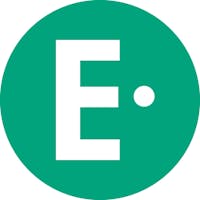As schools become more focused on continuous improvement and the development of growth mindsets, educators continue to evaluate how they can assess their students' learning to better inform instructional practices. This is foundational to both teachers and their administrators.
Danielle Grasso Vinas, Assistant Principal of Crescent Heights Social Justice & S.T.E.A.M. Magnet Elementary School, is excited about the prospect of redesigning traditional approaches to assessment and instruction. Here, the former elementary classroom teacher and math teacher advisor shares her thoughts on personalizing learning for individuals’ needs—and her school’s preferred platform for doing just that.
EdSurge: There is a lot of discussion right now about learning loss and learning gaps. What’s your perspective on these topics?
Grasso Vinas: Honestly, I find the term ‘learning loss’ difficult to digest. I think educators should refuse to subscribe to this idea. There has not been learning loss, but rather different types of learning. People are exactly where they need to be at this time. All of us have dealt with difficult challenges this last year and a half.
Educators have the responsibility to see where students are, what they know and how we can expand what they know. I understand the concern that students are not making specific metrics for the precise moment. But maybe it’s making us take a closer and better look at learning and what is relevant. It’s a good opportunity to evaluate and examine the metrics to see if they make sense for all of our learners and consider how we can work to personalize learning for the individual, rather than the average.
I think we need to do some serious instructional reflection. We need to re-evaluate our goals and how we meet them. This is an ideal time to re-examine anything that is standardized—standards, frameworks and assessments. How can we personalize things that have historically been standardized to see if they meet every individual learner’s needs?
We now have the perfect opportunity to shift the responsibility from adults to students—in order to drive their own instruction. We can use pre-tests to see what they know and then design experiences that extend or enhance their learning. We need to address learning through the zone of proximal development and relevance of content to students and the world at large.
Which strategies or tools do your teachers use to determine exactly where each student is at a given moment?
Our district uses Edulastic three times a year for common formative assessments. Teachers at our school site, as well as many others in our district, use Edulastic more often than that. The Edulastic assessments offer a great deal of diverse applications.
Teachers are also able to create standards-based assessments with as many questions as they like. They can create very relevant formative assessments at any time. Teachers have the option of creating their own questions or using the bank of questions provided in Edulastic. Teachers get data reports from each assessment. They can see how many minutes students spend on any question.
The diverse data is also helpful from an administrative perspective. For example, when a grade level gives a common formative assessment, we can look on the back end to start the conversations with teachers about how to personalize the learning and/or develop intervention learning plans.
Has this changed the way you assess students and monitor progress?
Before Edulastic, the assessments were often done with paper and pencil. Sometimes, we used assessments aligned from a specific curriculum; some teachers created questions based on the California framework. It was a quantitative and qualitative approach. The challenge was that the data report had to be created by the teachers.
In Edulastic, the quantitative data is automatically available and allows the teachers to design the qualitative data that's going to accompany that. This leads to much better conferencing with students and supports them individually. The data from Edulastic allows us to identify individual needs and develop personalized qualitative data.
Working with our district, Edulastic has put together great resources to help with assessments. For example, there are great YouTube videos to help teachers understand the platform and the data analysis.
How do you use Edulastic to address your school's specific needs?
One of the things that our district and Edulastic did together was to partner on using the California framework first to see what students needed to know each year developmentally. We co-created assessments to make sure there were familiar contexts, number choices and strategies students were expected to know. If something was not in the framework, we came back and said that it was not relevant. These types of things were then removed from the assessments. We vetted everything before it was implemented, and it’s been revised many times.
Teachers use the platform to choose and use questions based on who their students are. Teachers have tremendous autonomy with assessment implementation. As an administrator, I can see the whole school’s data very comprehensively and seamlessly. It also feeds well through our school management system.
I know some schools are using Edulastic for data talks with teachers. Some are using this with breakthrough teams, using improvement science principles. It’s a great way to capture data and then use it for the continuous improvement cycle model.
Edulastic’s insight function gives administrators and teachers an understanding of where students are based on any assessments. There is a completion report, and when we drill down on the data, we can look at student achievement by standard. We can see students’ strengths and areas to grow. We can use what they do well to help them grow in areas of need.
We can also look at students through demographic pieces with the insight function. We can sort students to inform flexible strategy groups, intervention areas and other personalized approaches. The demographic data helps us to use an equity lens by examining what factors are supporting students in one subgroup that are doing well and applying those principles to students in the same subgroup that are not yet doing as well. The data platform can also be used to support peer tutoring. The insight function is very powerful.



